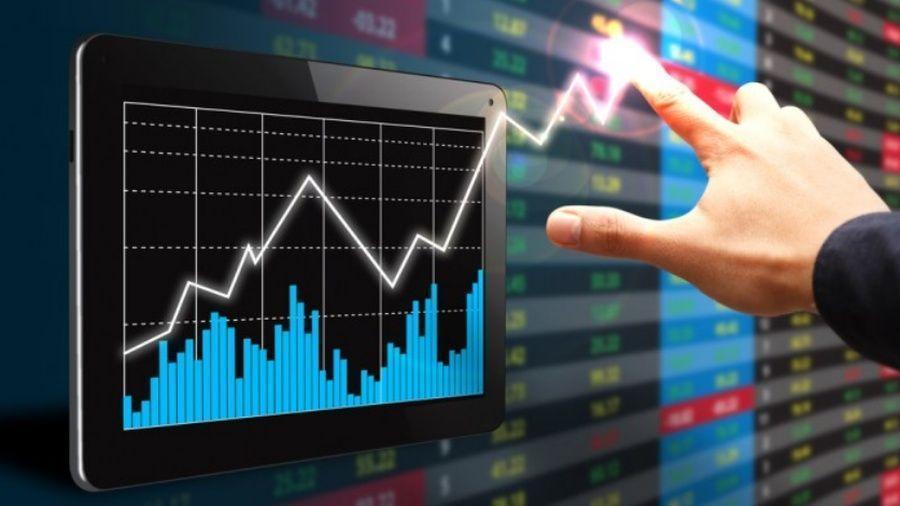When trading bitcoin and other cryptocurrencies, traders and investors use buy and sell orders. If there are more of the former, then bulls run the market, and if there are more of the latter, bears run the market. "Market depth" is a graphical representation of how many orders of the same and second types exist at a given time. In English, the concept of "market depth" is widespread and used, but sometimes you can find "order depth" — the essence does not change from this.
By and large, the tool helps traders in assessing liquidity. The indicator acquires special importance when choosing the moment of closing a deal. In other words, it can help you choose the ideal entry point.
Graphical representation
"Market depth" is an extremely simple indicator. To understand it, we will highlight four main components:
The horizontal axis (also known as the abscissa axis in mathematics) is a price line at which traders place orders;
The vertical axis (in mathematics, the ordinate axis) reflects the total number of sell (right) and buy (left) orders;
The offer line shows the cumulative valuation of all purchase orders at a certain point in time. It is most often represented by a green line falling from left to right;
The demand line is the aggregated value of all sales orders at a certain point in time. It looks like a line falling from right to left.
Different resources can give their own variations of the representation of the "depth of the market". In addition, you need to understand that the expression of supply and demand will depend on what you are trading in. For example, if you trade bitcoin for dollars, then all purchase orders will be in American currency, and sales orders will be in BTC. If you trade ether for USDT, then all purchase orders will be in USDT, and for sale — in ETH. The figure below shows one of the possible ways to represent the "depth of the market" in BTC/USDT.
Source: coinglass.com
We see several red and green lines on the chart. This is due to the fact that the platform provides "market depth" for several trading platforms at once: Bybit, Binance, BitMEX and OKX. The total figure for these four exchanges is also presented here.
"Market depth" in technical analysis
There are several ways to use the indicator at once: determining support/resistance levels, general liquidity assessment and searching for an entry/exit point. However, all this is done with a number of reservations and assumptions.
For example, you trade bitcoin on the KuCoin exchange for dollars. You carry out transactions both in long, that is, you buy, and in short, that is, you sell BTC. At a certain point in time, you discover a huge number of sales orders. Thus, you immediately have an understanding that a serious level of resistance has formed in the market, and the price is likely to go down. Which is what you are successfully playing on. If the opposite situation develops, and a huge number of buy orders are found, then the situation will be reversed — you will need to buy, due to the strong support level. Based on the large orders you have noticed, you can place orders yourself. It is reasonable to do this at prices slightly above or below a large accumulation of capital.
You can also use the depth of the market to assess the impact of large transactions on the price of cryptocurrency. For example, if you buy bitcoin on Binance even for $50,000, it will not have a significant impact on BTC. But if you buy a conditional Flux (the 200th cryptocurrency by capitalization) on the Bitget exchange, then as a result of such a transaction, the price can jump significantly.
Practical disadvantages
The main disadvantage of the indicator is that it does not take into account market manipulations. The "depth of the market" is a simple reflection of the orders placed, but the presence of an application does not mean that it is going to be turned into a deal. Cases of spoofing — situations where a major player puts up a huge bid to stimulate market movements in the opposite direction — are quite common.
Fictitious transactions also need to be taken into account. There are quite a lot of applications that will be executed not for profit, but for solving specific tasks: arousing interest in a particular asset or receiving buns from a project or site.
In addition, you need to understand that quite a lot of transactions take place on over-the-counter markets. And they will not be taken into account or reflected in the "depth of the market". This may lead to a misunderstanding of the real situation in a particular cryptocurrency.
Conclusion
"Market depth" is an indicator that provides a visual representation of the liquidity of the cryptocurrency on a specific trading platform. However, it has a number of flaws, which are due to the fact that it does not take into account the nature of unfair actions of some traders, as well as conducting transactions on the over-the-counter market. Therefore, the "depth of the market" gives an idea only of what the liquidity is within a particular trading platform, and not in the whole market.
